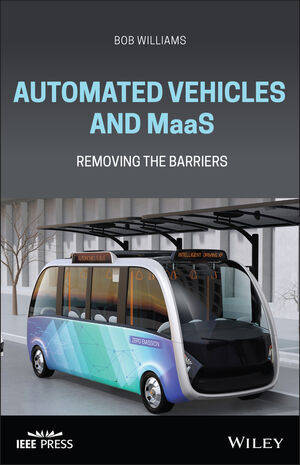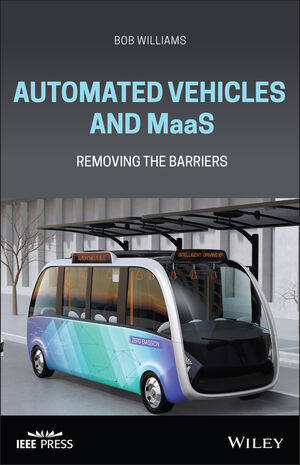
- Retrait gratuit dans votre magasin Club
- 7.000.000 titres dans notre catalogue
- Payer en toute sécurité
- Toujours un magasin près de chez vous
- Retrait gratuit dans votre magasin Club
- 7.000.0000 titres dans notre catalogue
- Payer en toute sécurité
- Toujours un magasin près de chez vous
Description
A topical overview of the issues facing automated driving systems and Mobility as a Service, identifies the obstacles to implementation and offers potential solutions
Advances in cooperative and automated vehicle (CAV) technologies, cultural and socio-economic shifts, measures to combat climate change, social pressures to reduce road deaths and injuries, and changing attitudes toward self-driving cars, are creating new and exciting mobility scenarios worldwide. However, many obstacles remain and are compounded by the consequences of COVID-19. Mobility as a Service (MaaS) integrates various forms of public and private transport services into a single on-demand mobility service. Combining trains, cars, buses, bicycles, and other forms of transport, MaaS promises a convenient, cost-effective, and eco-friendly alternative to private automobiles.
Automated Vehicles and MaaS: Removing the Barriers is an up-to-date overview of the contemporary challenges facing CAVs and MaaS. Written in a clear and accessible style, this timely volume summarizes recent research studies, describes the evolution of automated driving systems and MaaS, identifies the barriers to their widespread adoption, and proposes potential solutions to overcome and remove these barriers. The text focuses on the claims, realities, politics, new organizational roles, and implementation problems associated with CAVs and MaaS--providing industry professionals, policymakers, planners, administrators, and investors with a clear understanding of the issues facing the introduction of automated driving systems and MaaS. This important guide and reference:
- Provides an overview of recent progress, the current state of the art, and discussion of future objectives
- Presents both technical background and general overview of automated driving systems and MaaS
- Covers political, commercial, and practical issues, as well as technical and research content, yet suitable for non-specialists
- Helps readers make informed decisions and realistic estimates for implementing mobility solutions and new business models for transport services
- Includes an extensive bibliography with direct links to in-depth technical engineering and research information
Automated Vehicles and MaaS: Removing the Barriers is an essential resource for transport providers, vehicle manufacturers, urban and transport planners, students of transportation, vehicle technology, and urban planning, and transport policy and strategy managers, advisors, and reviewers.
Spécifications
Parties prenantes
- Auteur(s) :
- Editeur:
Contenu
- Nombre de pages :
- 288
- Langue:
- Anglais
- Collection :
Caractéristiques
- EAN:
- 9781119765349
- Date de parution :
- 17-05-21
- Format:
- Livre relié
- Format numérique:
- Genaaid
- Dimensions :
- 156 mm x 234 mm
- Poids :
- 566 g

Les avis
Nous publions uniquement les avis qui respectent les conditions requises. Consultez nos conditions pour les avis.






